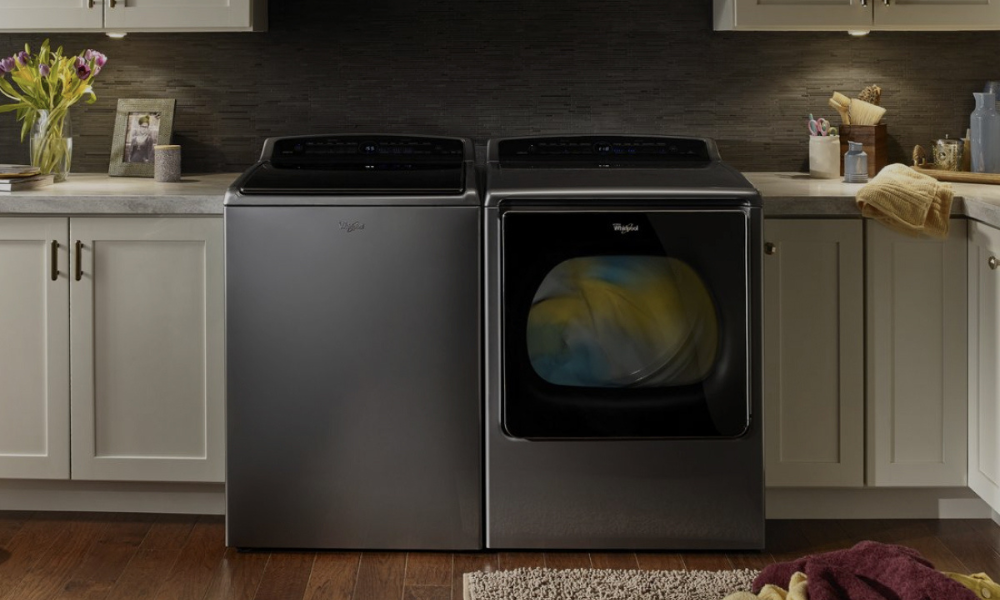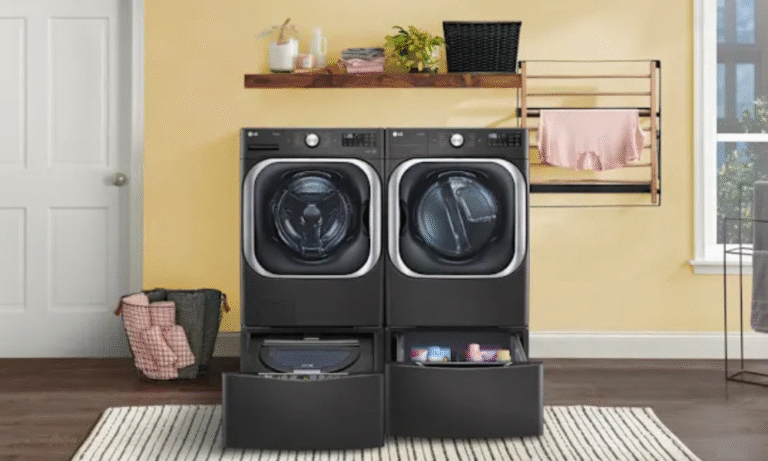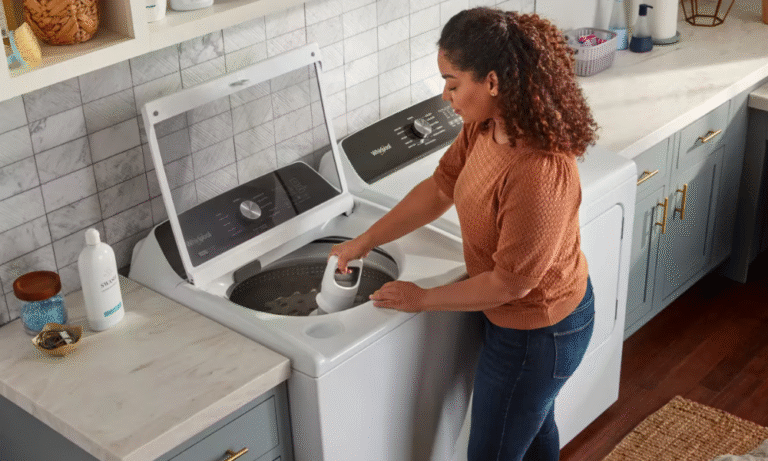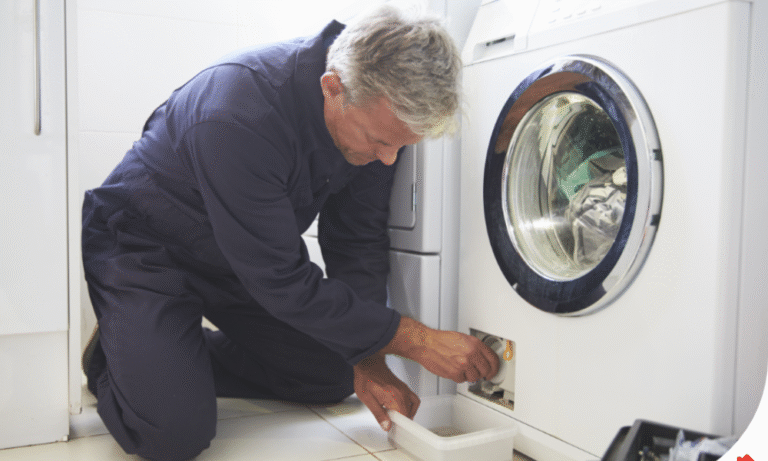Estimated reading time: 10 minutes
Last updated on August 23rd, 2025 at 02:01 am
Laundry is a necessary home task that calls for effective and efficient equipment to provide clean and fresh clothing. The agitator is a vital part of a washing machine that is important to the laundry process. This page attempts to provide readers with a thorough overview of washing machine agitators, including information on their sorts, considerations to make when selecting one, and maintenance advice. You will have an in-depth understanding of washing machine agitators after reading this article, and you will be prepared to choose the ideal agitator for your laundry needs.
Understanding Washing Machine Agitators

Photo Credit: barberandhaskill
What Is a Washing Machine Agitator?
A top-loading washing machine’s main component, the washing machine agitator, creates mechanical movement to aid in the cleaning process. Its main job is to rotate the laundry around the wash drum, which helps to remove dirt and stains by generating a dynamic environment. Agitators use a unique motion to stir the water and clothes, as opposed to conventional washing machine parts like impellers or pulsators.
The Role of Agitators in the Washing Process
In conventional top-loading washing machines, agitators are crucial to the washing process. An agitator is a central spindle or post that protrudes from the bottom of the drum and is covered in fins or vanes. Its function is to provide a motion that makes it easier to wash garments during the cycle. The following are the main jobs and duties of it:
Mixing and Dispersing Detergent
Agitators help mix the detergent with water to create a soapy solution. The water is stirred by the agitator’s fins or vanes, which ensure that the detergent is spread uniformly throughout the load. This increases the detergent’s ability to effectively remove stains and grime from clothing.
Mechanical Action
By rotating and shifting back and forth, agitators provide mechanical action. As a result of this action, friction is created between the clothing and the agitator. The friction improves cleaning by helping to loosen dirt, grime, and stains from the cloth fibers.
Enhanced Stain Removal
The vigorous motion created by the agitator helps target and remove stubborn stains. The agitator enhances the contact between the fabric and the cleaning solution by moving the garments against it and one another, increasing the likelihood that stains will be removed.
Loosening and Suspending Soil
Agitators help loosen soil and suspend it in the water. The water is stirred up by the back-and-forth action and the fins or vanes on the agitator, which causes the water to circulate and agitate the clothing. By helping to release and suspend dirt, debris, and other particles from the cloth, this action makes it easier to rinse them away.
Thorough Cleaning
The combination of the agitator’s mechanical action and the detergent solution helps to ensure thorough cleaning of the clothes. Laundry comes out cleaner and smelling better because to the agitator’s movement and rubbing action, which helps take the dirt out of the fabric fibers and remove it.
It’s crucial to remember that classic top-loading washing machines are the main place where agitators are located. Many contemporary washing machines, particularly front-loading versions, substitute tumbling or pulsing motions for agitators. In order to successfully clean the garments, these alternate techniques rely on the drum’s rotation and tumbling.
Types of Washing Machine Agitators
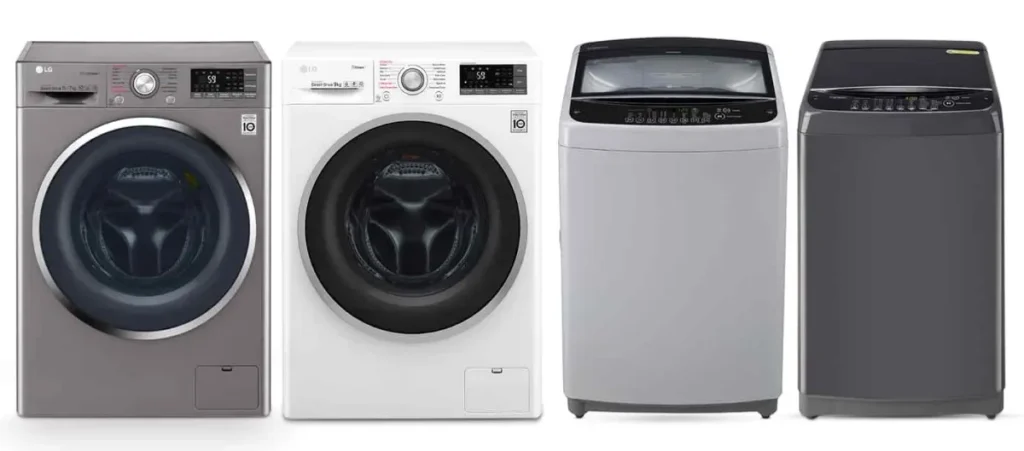
Photo Credit: butterflygroupbd
Traditional Agitators
For many years, conventional agitators have been the go-to option in top-loading washers. They are made up of a tall spindle with outward-facing vanes or fins. These fins provide strong water turbulence while the agitator turns, which produces an efficient cleaning action. Traditional agitators are well recognized for their powerful cleaning abilities, but they may be more likely to tangle clothing and damage delicate materials.
Impeller Agitators
Wash plates, commonly referred to as impeller agitators, have grown in popularity recently. Impeller agitators have a low-profile design with a cone- or disc-shaped plate at the bottom of the wash drum in place of a tall spindle. These agitators agitate the clothing and produce a scrubbing action by combining high- and low-pressure water jets. Impeller agitators may need more water to provide the best washing results because they are often kinder on clothing and suited for delicate materials.
Hybrid Agitators
Hybrid agitators give users a flexible choice by combining the advantages of classic and impeller agitators. These agitators have a low-profile design similar to that of impellers, but they also have fins or vanes that provide a more forceful agitation akin to that of conventional agitators. Hybrid agitators strive to combine the advantages of the two, providing effective cleaning performance while reducing the possibility of clothing tangling. However, compared to conventional or impeller agitators, their supply may be constrained.
Factors to Consider When Choosing a Washing Machine Agitator
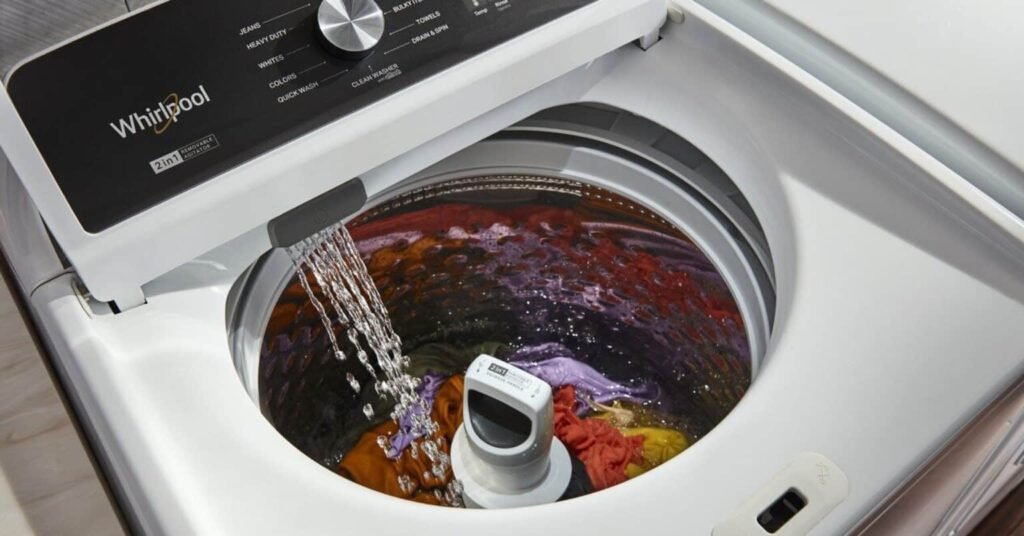
Photo Credit: donsappliances
To achieve optimum efficiency and convenience, numerous considerations should be made while choosing a washing machine agitator. The important factors are as follows:
Capacity and Load Size
The amount of laundry that can be loaded and its size may vary according to the agitator type. Traditional agitators frequently support heavier loads, making them appropriate for homes with more demanding laundry requirements. On the other hand, due to their design, impeller and hybrid agitators may have slightly lower capacity. Choose an agitator based on your demands after taking into account your washing requirements.
Energy Efficiency
Consideration should be given to energy efficiency because it affects both sustainability efforts and your power costs. Due to their design, traditional agitators frequently consume more water and energy, but impeller and hybrid agitators typically do so with less waste. Choose an agitator type based on its energy efficiency rating after comparing it to your priorities.
Cleaning Performance
A washing machine’s main objective is to effectively clean garments. Consider an agitator’s
cleaning capacity while choosing one. While impeller and hybrid agitators offer softer washing for sensitive materials, traditional agitators are recognized for their powerful cleaning action. Consider your household’s individual cleaning demands and choose an agitator that meets them.
Durability and Longevity
To preserve the lifespan of your washing machine agitator and reduce the need for frequent repairs, you must invest in a strong, long-lasting model. Think about the design, materials, and general toughness of various agitator types. Reviews and user experiences can also offer insightful information on the dependability and longevity of particular agitator kinds.
Noise and Vibration
When doing laundry, noise and vibration levels can have a big influence, especially if your washing machine is close to where you live. Look for agitators that have low noise and vibration levels when selecting one. Compared to traditional agitators, impeller and hybrid agitators often generate less noise and vibration, creating a calmer and more stable laundry environment.
Maintenance and Care Tips for Washing Machine Agitators
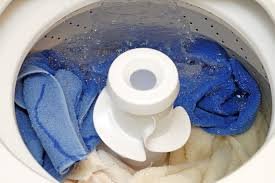
Photo Credit: reliableappliancecs
The lifetime and best performance of washing machine agitators are dependent on regular maintenance and care. Here are some cleaning and maintenance advice for washing machine agitators specifically:
Regular Cleaning
Over time, agitators may gather dirt, lint, and detergent residue, which may reduce their efficiency. Regularly remove any apparent accumulation or dirt from the agitator. The fins and vanes of the agitator may be gently scrubbed using a soft brush or a toothbrush. Use a sponge or moist towel to clean it.
Inspect for Damaged or Loose Parts
Check the agitator from time to time for any loose or broken pieces. To check for excessive movement or rattling, give it a little shake. Replace any broken or worn-out parts as soon as possible and tighten any loose nuts or screws.
Take Care of Stains or Odors
If the agitator has stains or smells, you may clean it by rinsing it with warm water and a little detergent. Use a gentle brush to gently clean the afflicted areas after applying the solution. Before operating the washing machine, give the agitator a good rinse and dry it.
Prevent Overloading
Overloading the washer might overwork the agitator and impair its effectiveness. Avoid stuffing the machine with too many garments by adhering to the load capacity instructions from the manufacturer. To avoid imbalance, distribute the weight across the drum equally.
Use the Correct Detergent
The health of your agitator depends on the type and quantity of detergent you use. Observe the detergent use recommendations provided by the manufacturer. Avoid using a lot of detergent since it might build up and reduce the agitator’s efficiency. Pick dependable detergents that are simple to dissolve.
Address Strange Noises
If you hear any strange noises coming from the agitator while it is running, look into the source. It can be because of loose parts or foreign things that got stuck in the agitator. Once the machine has been stopped and unplugged, thoroughly check the agitator for any problems. Clear away any obstacles and, if required, adjust any loose components.
Follow the Manufacturer’s Instructions
For further advice on how to take care of your washing machine and agitator, always consult the manufacturer’s handbook. It’s important to adhere to the specified instructions because different models could have different needs.
Professional service
If the agitator continues to give you problems or if you notice severe performance concerns, think about hiring a qualified expert for service. Any underlying mechanical or electrical problems with the agitator can be identified and fixed by them.
You can make sure your washing machine agitator stays in good shape and delivers efficient agitation and cleaning performance for your laundry by according to these maintenance and care suggestions.
Frequently Asked Questions
1. How do I know if my washing machine agitator needs replacing?
It could be time to replace the agitator if you observe a large decline in cleaning effectiveness, excessive noise or vibration, or outward signs of damage. For a proper evaluation and replacement, if required, consult the manufacturer’s instructions or ask a qualified technician for assistance.
2. Can I upgrade my washing machine agitator?
In rare circumstances, you might be able to replace your washing machine’s agitator with a newer model or a different type. The particular washing machine model may, however, affect compatibility and availability. To find out about upgrade options for your washing machine, get in touch with the manufacturer or speak with a qualified technician.
3. How long does a washing machine agitator typically last?
A washing machine’s agitator’s typical lifespan might change based on factors including usage, upkeep, and the agitator’s quality. Agitators often survive five to ten years or longer with adequate care and upkeep.
4. Are all agitators OK for use with top-loading washers?
Not all top-loading washing machines can use all agitators. Agitators are available in a variety of shapes and sizes to match particular brands and models. Verify compatibility before purchasing a new agitator by reviewing the manufacturer’s specs or speaking with a qualified technician.
5. Is it possible to operate a washer without an agitator?
Yes, it is possible to find washing machine models without an agitator. To agitate the water and clean the clothing, these machines often employ various mechanics such as impellers, pulsators, or drum motions. Before making a choice, take into account your tastes, your laundry needs, and the advantages and disadvantages of various washing machines kinds.
Conclusion
For your laundry routine to be efficient and productive, picking the appropriate washing machine agitator is essential. You can make sure your washing machine lasts as long as possible and performs at its best by studying the various agitator types, taking into account a number of aspects when choosing one, and doing the recommended maintenance procedures. Don’t forget to evaluate your unique demands, give energy efficiency first priority, and take into account elements like capacity, cleaning effectiveness, and durability. You may have clean, fresh clothes for years to come if you choose the appropriate washing machine agitator.
